
7078 Bembe Beach Road
Annapolis, MD, US, 21403
Tel:(410) 269-0939

1973 Herreshoff H-28
SWEEP is a modified Herreshoff 28 design. Custom built by master craftsman in Grand River Ohio. Builder was foreman Douglass & McLeod and then Tartan Marine. Seven year custom build - Original family owned and maintained to original standards.
Specifications
Engine 1 Specifications
Media Gallery
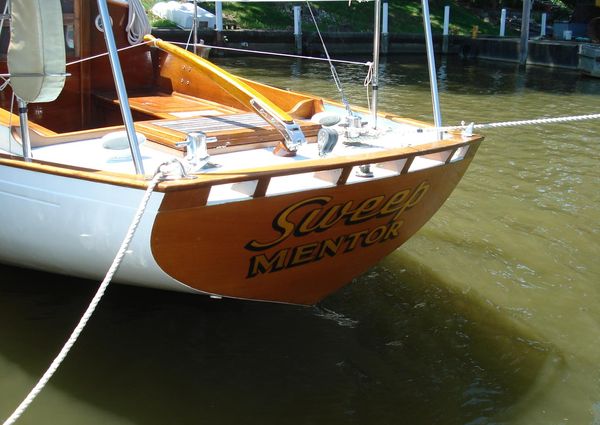 |
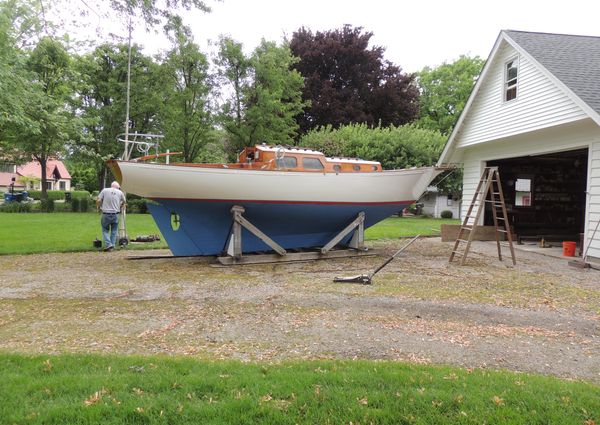 |
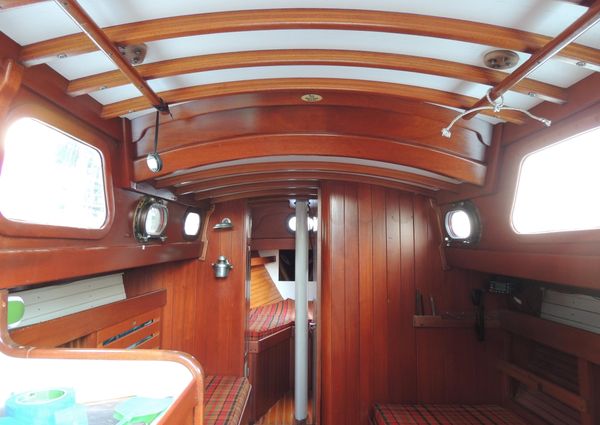 |
 |
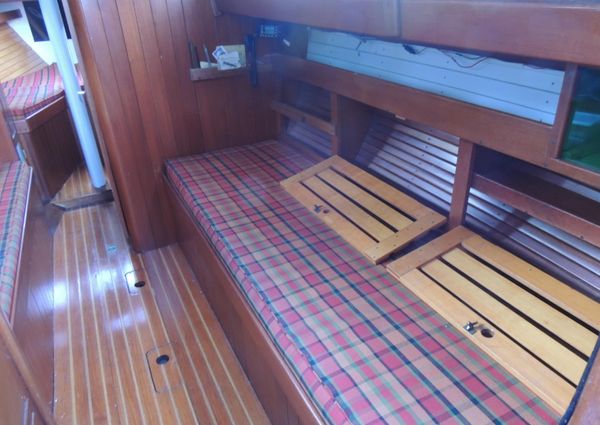 |
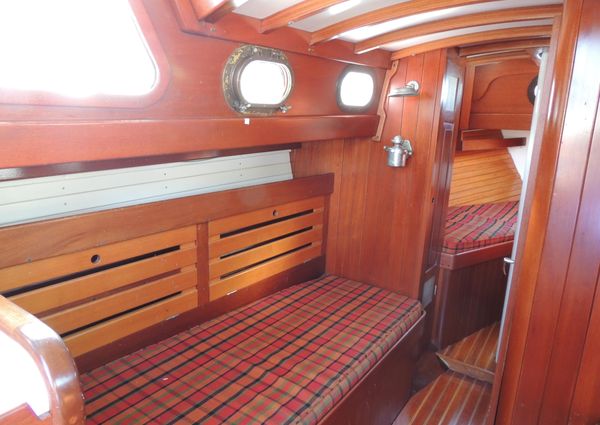 |
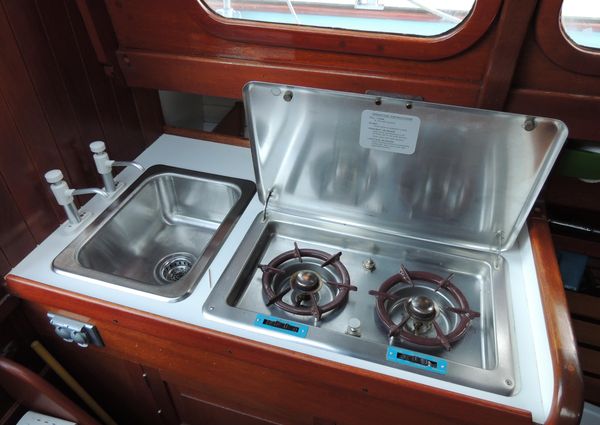 |
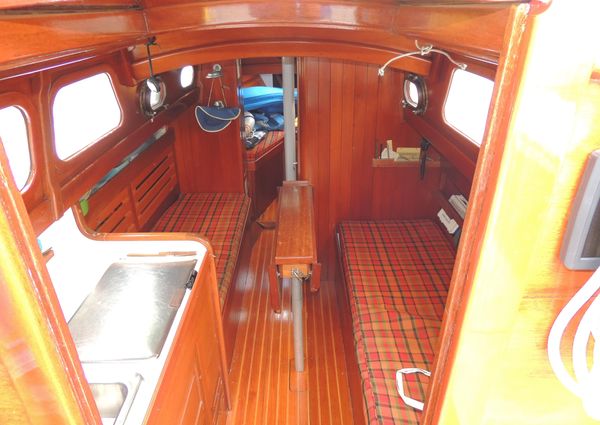 |
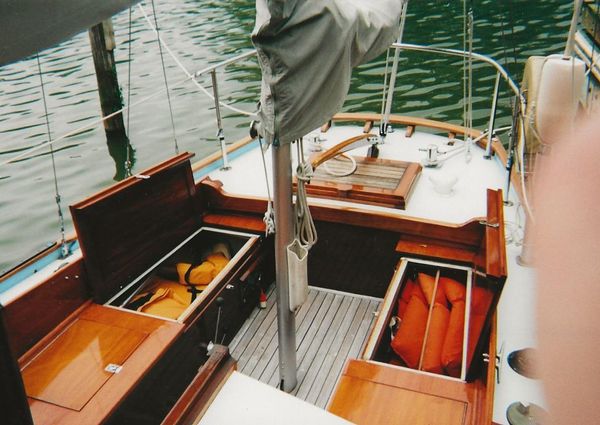 |
 |
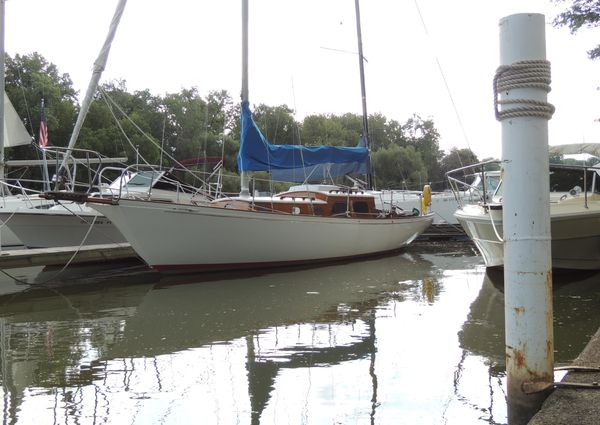 |
“Sweep” is a Herreschoff 28 built to a modified design by a professional wooden boat builder and launched in 1973. One family owner. Stored inside near Cleveland, Ohio and sailed only in fresh water on the Great Lakes.
The construction is concave/convex mahogany edge nailed and glued planking on laminated white oak and mahogany frames. Bronze fastenings throughout. Deck is marine plywood overlaid with fiberglass. Interior hull is lined with mahogany and spruce.
The boat is ready for Spring launch. All exterior wood has been varnished and the bottom has been painted.
The H 28 is ketch rigged but can be sailed as a sloop. The owners normally sail the boat as a sloop. The mizzen mast is installed when it is entered for a once-a-year 30 mile race.
If you are looking for a traditional wooden boat with some modern aspects (aluminum masts, fiberglass decks) this is a great boat to consider. Whenever you enter a harbor, heads will turn and accolades are always communicated. The roller furling genoa makes getting ready to sail just that much easier. Although the main sheet has a winch, it has never been needed under any wind condition making sail handling that much easier. This modified H 28 has superior sailing capability compared to the original design with much improved storage and living accommodations.
Raised the rig 4’ to increase sail area for better light air sailing.
Added a 3’ bow sprit
Adjusted the position of the masts to account for the new Center of Effort.
Lowered the keel by 4” so draft is 4’6”
Added a cabin house
Enclosed marine Head (no cedar bucket)
Ice box with below deck and deck level access
Sink and Stove
Transom extended 2’ to add storage and enclose rudder
GPS
Atomic 4 Engine 30 HP
Aluminum masts with internal halyards
Roller furling Jib
Intermediate headstay
Sails: Main
Jib – sets on the intermediate headstay and Roller furling Genoa
Mizzen and Mizzen Staysail
Spinnaker Staysail and Symmetrical Spinnaker
PHRF Rating 228
This is the history of the boat builder and master craftsman, Ed Chimney from Mentor, Ohio. He built a modified version of an H-28, which he christened "SWEEP".
Ed Chimney was born in Parma, Ohio on August 18, 1915. He grew up in Garfield Heights and graduated high school in 1933. This was the bottom of the Great Depression and he found work in a sewing factory repairing sewing machines. Two years later he started to work for Warner& Swasey Co. in Cleveland, Ohio. He got his machinist card while working at Warner & Swasey and worked as an assembler including jigs and fixtures for turret lathes. He then moved to the Inspection and Testing Department checking each part and machine before shipping to the customer. After 10 years he was laid off and then spent 6 months building cabins for a tourist camp in Northern Michigan.
He also attended Case School of Applied Science in the evenings, for 6 years, taking drafting and engineering drawing.
His passion was to always work with wood and had 6 years of wood shop training and self-taught himself on the different wood species, how they act, finishing and etc. He also enjoyed amateur photography as a hobby and had his own dark room.
During his 20’s he had an opportunity to spend time at the Mentor Harbor Yacht Club in Ohio where he became familiar with both power and sailboats. He was self-taught in boat lofting. It was during this time he gained experience bending frames and planking during boat repair.
In 1946 he married Lillian and they had 3 children.
He then went to work for Douglas & McLeod in Grand River, Ohio. This was Sandy Douglas who is famous for designing the Thistle, Highlander and the Flying Scott. Ed worked at D&M for most of his career building and repairing boats. He became the only superintendent of D&M reporting directly to the owners.
During the 1960s D&M started to convert from building boats out of wood to fiberglass boats and were truly pioneers in this new technology. Also, during this time, Charlie Britton (Tartan Marine) formed a partnership with D&M to make the first Tartan 27. Our dad was an important contributor with creating the pre-production molds for the hulls and decks on several Tartan Designs. He was also instrumental in setting up the jigs that were used for making the interior components for mass production. He had a long history working with Charlie Briton and Tartan’s designer, Tim Jackett.
In 1966, he started to build his modified Herreshoff 28 (H-28). It took him 7 years to build the boat and from the beginning he built it as a family boat. He actually started the boat many years earlier when he identified an Oak Tree in Northeast Ohio and had it cut down for the main timbers for Sweep. He had to balance love of the design and his oldest son’s desire to have a fast boat. Ed sailed on a number of H-28’s so he was familiar with improvements that could be made. The modifications made to the design to improve cruising capability included:
- Raising the sheer in the middle of the boat 4 inches for increase head room
- Making the cockpit waterproof and self-draining for bad weather
- Creating a dog-house cabin to increase head room
- Adding an enclose head for privacy
- A dedicated galley area for cooking
- A built in ice box that could be accessed for both the cockpit and the cabin
- Added 1.5 feet to the transom for extra storage
- Added a main sail track to the cabin house to move the mainsheet out of the cockpit area
To improve the sailing characteristics he:
- Added 4 ft to both the main and mizzen mast to get more sail area
- Added a bow sprit to create a larger fore triangle
- Adjusted the mast locations to account the change in the center of effort for the increase sail area
- Added 4 inches to the keel and adjusted the weight location for the changes in the design.
- The hull was meticulously faired with no seams (no caulk or putty) to improve speed
To design for less maintenance:
- He overlaid the plywood decking with fiberglass instead of canvas
- Strip planking was used instead of traditional carver planking making the hull very strong and much easier to take care of.
- Aluminum mast were used instead of wood masts and therefore improving reliability and reducing the yearly varnishing required
The boat was commissioned in 1973 with a traditional christening ceremony including breaking the champagne bottle over the bow, a blessing by the minister and a silver dollar laid at the mast step. By this time, Ed’s children had grown and were either in college or working. Their dream of being on some kind of race circuit in the Great Lakes was not going to happen. However, the boat has been entered yearly into the Falcon Cup Race which is a 30 mile race from Cleveland Yacht Club to Mentor Harbor Yacht Club. This was the race that inspired the design changes to improve the boat’s sailing characteristics. And, historically the boat has been done very well with the right wind conditions even against the current super modern designs.
Ed and Lillian enjoyed many years of day sailing, cruising Lake Erie and cruising to their favorite place, Georgian Bay off Lake Huron.
The boat was meticulously maintained by Ed until his death in 1993 and continued to be maintained by his children to date. The boat is free of any dry rot and varnish work continues to be maintained with at least 7 coats of varnish and/or stripped and refinished as blemishes occur. Any time a repair was needed his family marveled at how he was able to build such an quality boat and how he knew how to do it!
Looking for a suitable home to keep her to current / previous standards.
Potential purchasers should assume that any items on the vessel at the time of viewing, but not specifically listed on this specification sheet, are not included with the sale of the yacht. These specifications are believed to be correct but cannot be guaranteed. Specifications are provided for information purposes. Data was obtained from sources believed reliable but is not guaranteed by owner or brokers. Engine hours are approximate, may be reported verbally by the seller, and are recorded at the time and date of the original listing of this vessel. Owner's use during the time of this listing may affect the total engine hours upon a prospective buyer's inspection. Buyer assumes responsibility to verify all speeds, consumptions, capacities and other measurements contained herein and otherwise provided, and agrees to instruct his/her agents or his/her surveyor to confirm such details prior to purchase. This vessel is subject to sale, price and inventory changes or withdrawal from market without notice.